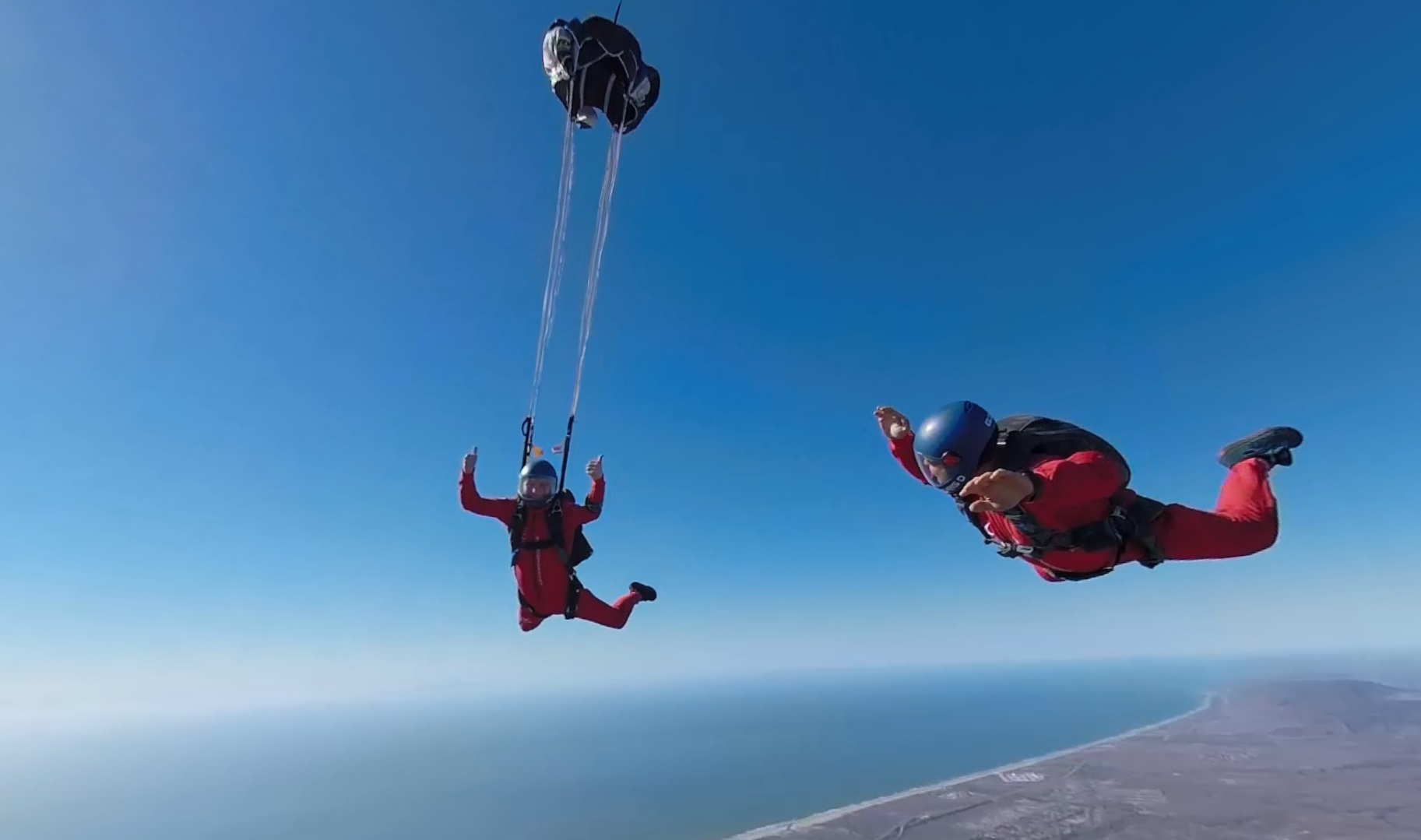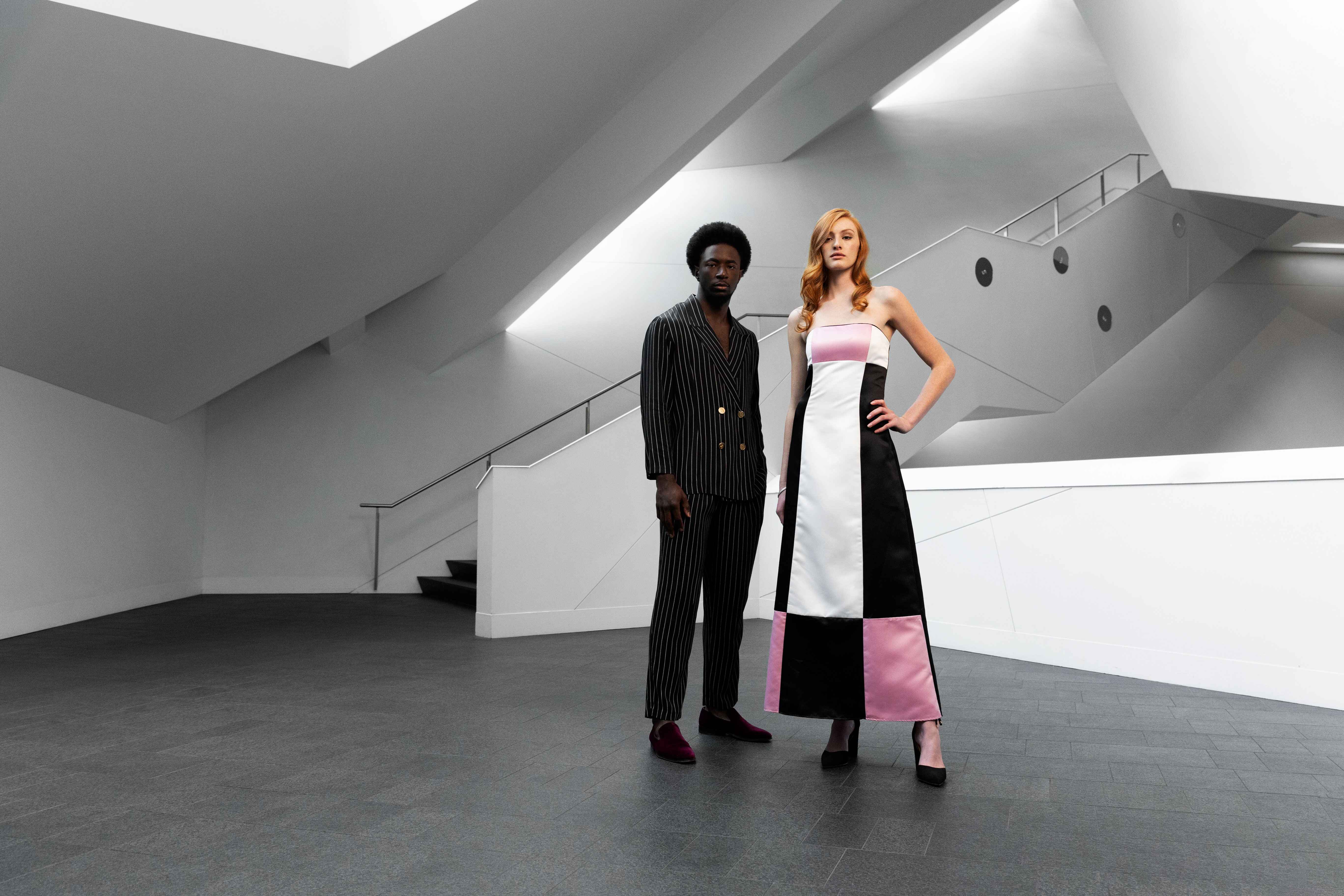If you ever wanted to free-fall 13,000 feet to Earth but didn’t have enough nerve to actually jump out of a plane, you’re not alone. Indoor skydiving is America’s most innovative pastime, and it’s so easy even three-year-olds can do it. iFLY Indoor Skydiving in Lone Tree is where you can soar over winds at roughly 130 miles per hour, and feel what it’s like to be a bird. iFLY Denver has been around since 2006, but they’re taking the skydiving experience up a notch. Flyers age eight and up now have the chance to feel what it’s like to free-fall in Dubai, Hawaii, Southern California or the Swiss Alps using virtual reality technology through a helmet and headset, and it’s quite the adventure.
According to Andre Gerner, a certified flight instructor at iFLY Denver, the idea for the virtual reality (VR) indoor skydiving began when cell phone technology began to evolve.
“Now that technology is advanced with cell phones having integrated accelerometers, we realized we could take the Samsung Gear VR and program a package and slap that on one of our helmets and take 360 [degree] video. So, in addition to just getting the feel of what it actually feels like to skydive, we’re able to take away the sense of being only six feet away from the wall and the floor in front of you,” Gerner said.
Just like in skydiving — flyers have to put on a special flight suit, helmet and goggles and attend a short training session about hand signals and safety before they enter the wind tunnel. An expert flight instructor accompanies them for support and through the VR goggles, flyers see themselves jumping from a plane and soaring over the ground below in their chosen destination.

Marc Gibbons, a sales manager at iFLY Denver, said that observers can also see what you’re looking at on a TV screen.
“You can see what they see when they move their head and what they’re looking at. It’s kind of voyeuristic in a way. It shows you what we can really achieve here,” Gibbons said.
Gerner said that the main difference between real skydiving and flying at iFLY is that the force of the air is simulated to reflect the speed at which you fall, but there are also many similarities between the two experiences.
“This basically is a treadmill for skydiving. So instead of you falling past the air, we move the air the same speed you would be falling past. That creates this simulation where you can experience the exact same physics at work and the exact same moves and body positions and subtle tweaks you would use to fly around in the sky,” Gerner said.
However, the time duration of the skydiving experience is the same.
“A one-minute flight is actually designed to simulate the length of an actual skydive from leaving the plane to pulling your parachute. It takes 10 seconds to fall your first 1,000 feet and five and a half seconds to fall 1,000 feet after that,” Gerner said.
With the VR helmet and goggles on, what you see while flying is very lifelike and causes you to have no sense of the real ground in front of you.
“If I spun you around, you would see all the different angles you’re allowed to look,” Gerner said.

However, indoor skydiving requires more training if you really want to get good.
“The difference between this is and the sky is just like two different parental styles. The sky is your laidback stepparent — here’s 50 bucks and go to the mall — whatever. This guy [indoor skydiving] is the strictest disciplinary with no ice cream until you get A pluses,” Gerner said.
“When you’re the sky there’s nothing to bonk into, so you can try flips and spins and stuff really early on in training. Whereas in here, you know it’s hard to try really crazy stuff without getting unstable and to a point where we wouldn’t be able to stop you.”
Practice makes perfect though. iFLY Denver is the best place in Colorado to improve your skydiving. The Air Force Academy even drives up from Colorado Springs to use the facility. It’s also great for kids who are too young to try the sport.
No matter what your skill level is, this adrenaline-pumping experience is bound to be thrilling.
“If you’re a skydiver, come here to get better because that’s how you do it, and if you’re not a skydiver, this is basically Hogwarts,” Gerner said. “It’s literally magic.”
Flight packages start at $59.95 (two flights) and the virtual reality flight experience is an additional $20 and up for one flight. iFLY Denver is located at 9230 Park Meadows Dr., Lone Tree. Click here to book.







This may look gimmicky at first glance, but even experienced skydivers who have made thousands of jumps find that the VR experience is more immersive than you might expect! Very cool combo of technology and technology!